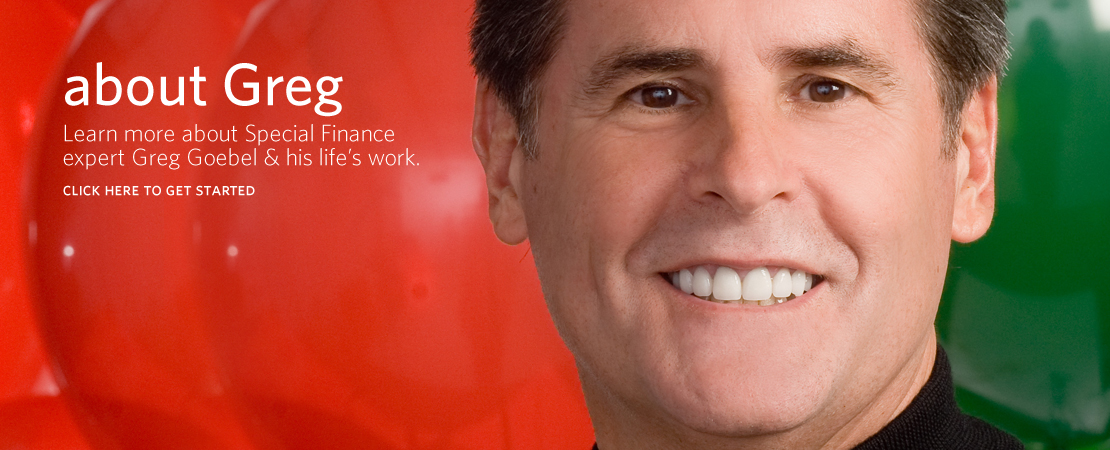2014 Expected to Be Banner Special Finance Year
Dealers, vendors and finance companies all attend the annual NADA convention for a variety of reasons – education, opportunity to see the latest in products and services, to network, and in some cases, for the parties. My annual trek is always with the focus to get important face time with the top executives of the banks and auto finance companies that serve our market. It give me the chance to learn what is “new and improved” about their programs (in order to be able to help dealers understand what that means for them), to learn how their company is doing and what to expect over the next 12 months, and finally, where they see the Special Finance industry in general heading.
For a myriad of reasons, two years ago I predicted a downturn in the 4th quarter of 2014 (and still expect it) – so all of my conversations included that – but I came away from the convention definitely feeling better about 2014 – actually very bullish – and any impending downturn.
The Past
The Special Finance industry has been very cyclical over the past 25 years. About every five or six years “lending” has gotten very competitive (read “loose”) leading to a few companies really stretching the envelope with regards to dealer advance, loan-to-value ratios and term. It happened last in 2006 and 2007 when I stated often that even a trained monkey could structure a SF deal, throw it at the wall and make it stick. Companies in bullish markets fight for share then “suddenly” there is a hiccup or two.
After said hiccup comes a period where dealers find it is tougher to get deals done, and the reverse occurs – advances tighten and fees/discounts seem to increase. This last happened in 2008 and 2009 when Special Finance companies and banks drastically tightened up when it became extremely difficult or even impossible for those that need to borrow capital to lend to do so (all caused by factors not involving auto). Many dealers thought that the end of subprime lending had occurred. Obviously, it didn’t.
When the tightening occurs, to no one’s surprise, those that remain generally get more profitable. Special Finance banks and finance companies enjoyed record profits after those two years of tight credit. Record profits in turn encourage growth, and loosening of the credit, which brings us to where we are today. For those of you in the business then, 2006, 2007 and even the first part of 2008 brought incredibly profitable days for Special Finance dealers and departments. That is where we are today … at least six years later in an industry that seems to cycle every five years.
The Present
The good news is that every executive that I spoke with at NADA sees a year full of continued prosperity. Even though margins are shrinking, many of the markers that tend to impact the industry – such as climbing unemployment – are still not present. Loan performance, while not as good as it was after the tight credit policies of 2009 and 2010 is still very good. Indeed, while many of the companies are happy with their market share, some are predicting some incredible growth for 2014, which means good things to the dealers and departments.
I also had the chance to assuage my concerns about the financial health to any of those that I spoke with. CEOs, COOs and presidents have been very forthcoming with me over the years and every one of them gave me the confidence that they are on very sound financial footing – no matter what happens in the market – and in spite of what the rumor mill might churn up. For those that securitize their portfolios in order to raise capital, the pricing of upcoming securitizations are expected to be at or below their last venture into the market, again boding good things.
Finally, as I also predicted two years ago, we finished at nearly 16M SAAR in new vehicle volume, the highest since 2007. All industry analysts predict that we will eclipse the 16M mark in 2014. Combine that with the fact that credit scores have continued to deteriorate, that nearly 28% of new cars sold are to subprime credit customers and you should have a recipe for good things to come.
The Future
So what does this mean to the dealers and their departments? First and foremost, if you aren’t in the game you are missing a significant part of the business. With the average credit score, as reported by Experian, for someone financing a used vehicle being 657 that means that the average used car buyer has non-prime credit. So whether new or used vehicles, why wouldn’t you want to be getting your share?
As for the actual programs, I can report through individual transactional data that is reported to me daily by dealers across the U.S., and confirmed by many of the banks and finance companies, less emphasis is being placed on down payment, even in the lower credit tiers. Of the last 1,800 deals reported to me on sales financed where the primary applicant has a credit score of 650 or below, the average cash down payment is just $961. Additionally, 111 of those deals, on credit scores below 474 (average credit score 451) , had an average cash down payment of just $869, of which 82% went through mainstream SF banks/finance companies (NOT portfolio style finance companies). [As a side note – The lowest credit tier approvals do NOT appear to be due to factory-subvented programs on new cars as might have been the case a year ago.]
To that point, roughly half of the execs opined that they are putting more emphasis on the ability to repay (payment-to-income ratio) and risk (loan-to-value) than on the initial cash investment. Couple that with some of the instant decisioning available in the market, a SF manager just cannot afford to look at most deals and arbitrarily say “this person can’t buy.” If so, you are going to be passing a lot of business.
It is important to remember two things. First, those 111 deals only represents about 7% of the total sample, so don’t expect a high percentage of these deals to be approved. Most likely there was strong income involved, and maybe even a very fresh bankruptcy filing. Second, cash down still is important – and too many dealers just don’t do a good job in asking for it.
So that is both my takeaway from NADA and my perspective as I steam through my 25th year in the Special Finance industry. Coming from the Midwest, we say “Make hay while the sun is shining.” Even though it is still may seem like the North Pole in many areas of the country, the sun IS shining in the SF industry – take advantage of it while you can!
Greg Goebel
CEO




